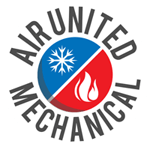Air conditioners are complicated appliances to deal with. While they might seem a simple system, its installation requires several setups to ensure efficient and secured operation. While a professionally installed air conditioner is always recommended, DIYs are often an option if you have the knack for it. Search AC installation near me on the internet to connect with HVAC contractors.
If you have decided to help yourself with the installation process, you need to set a few things straight before you begin with the technical work –
1. Decide The Space
The central AC unit is usually placed outside the building and connected with the duct lines. However, it may be ideally placed on the roof. An ideal space is easily accessible for maintenance, adequately distant from the living population, and well ventilated to ensure sufficient airflow.
2. Examine The Ductwork
The duct lines are responsible for distributing the cold air from the air conditioner throughout the house. Therefore, any kind of puncture in the ductwork can leak the cool air outside. These leaks affect the efficiency of the system drastically.
3. Safety While Handling Refrigerant
Refrigerant is a highly carcinogenic chemical, and it requires professional certification to handle that. Therefore, you may seek the help of someone with that certification to avoid unwanted mishaps while dealing with the coolant. You can connect with a technician by searching AC replacement near me on Google.
4. Connecting The Air Conditioner
The AC system after the preliminary installment, either on the ground pad or the rooftop, has to be connected with the ductwork and power supply. There might be some indoor components to install. A DIY AC installment might require you to –
- Determine the adequate length of the coolant line and drain piping.
- Then, connect the system with the electrical lines.
- Finally, connect the AC system with a correctly calibrated thermostat.
- Then, run the system on trial to check its functioning.
Having installed the HVAC system correctly, you should be able to run the appliance properly. The blower and the compressor would work efficiently, facilitating adequate airflow through the ducts. As a result, your space will gradually be cooled down. Great! You have been successful in installing an air conditioner all by yourself.
This is not an exhaustive guide. You may be able to learn more about installation from the manual guide provided along with your HVAC system. The manual has detailed instructions illustrated with diagrams to help you identify the components. It is imperative to mention here that basic electrical and general HVAC knowledge helps get the installation process to hang faster. You will be able to identify the potential problems in the unit and mend them before they spiral into something serious.
It is worth noting that a system working efficiently may possess some tacit problems like refrigerant leaks, faulty electrical lines, or general malfunctioning components. These problems, if unattended, might lead to uncalled for serious issues. It may cost you unwanted expenses later. It is because of this reason that a professional installation is recommended to avoid later complications.
If you live in Texas, instead of Googling AC installation near me, call Air United Mechanical at (281)-719-0722. You can also drop us a mail at info@airunited4u.com.

